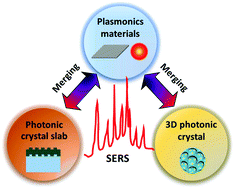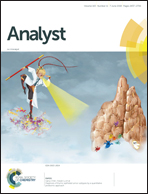Recent advances in merging photonic crystals and plasmonics for bioanalytical applications
Abstract
Photonic crystals (PhCs) and plasmonic nanostructures offer the unprecedented capability to control the interaction of light and biomolecules at the nanoscale. Based on PhC and plasmonic phenomena, a variety of analytical techniques have been demonstrated and successfully implemented in many fields, such as biological sciences, clinical diagnosis, drug discovery, and environmental monitoring. During the past decades, PhC and plasmonic technologies have progressed in parallel with their pros and cons. The merging of photonic crystals with plasmonics will significantly improve biosensor performances and enlarge the linear detection range of analytical targets. Here, we review the state-of-the-art biosensors that combine PhC and plasmonic nanomaterials for quantitative analysis. The optical mechanisms of PhCs, plasmonic crystals, and metal nanoparticles (NPs) are presented, along with their integration and potential applications. By explaining the optical coupling of photonic crystals and plasmonics, the review manifests how PhC–plasmonic hybrid biosensors can achieve the advantages, including high sensitivity, low cost, and short assay time as well. The review also discusses the challenges and future opportunities in this fascinating field.

- This article is part of the themed collection: Recent Review Articles


 Please wait while we load your content...
Please wait while we load your content...